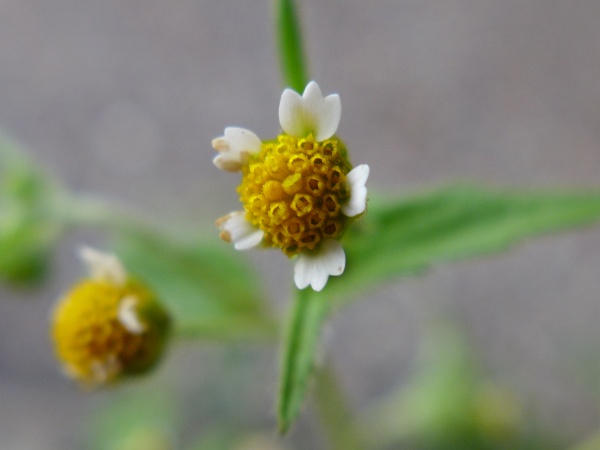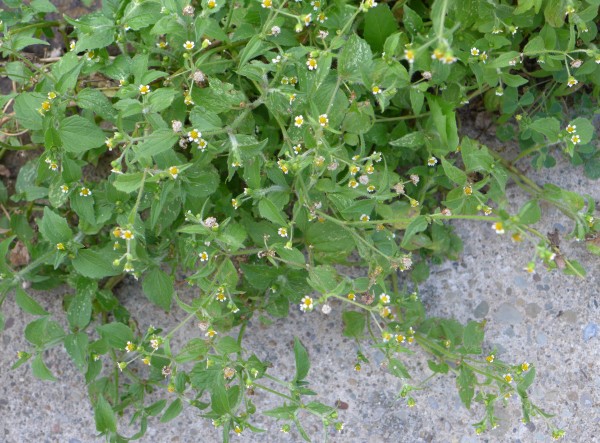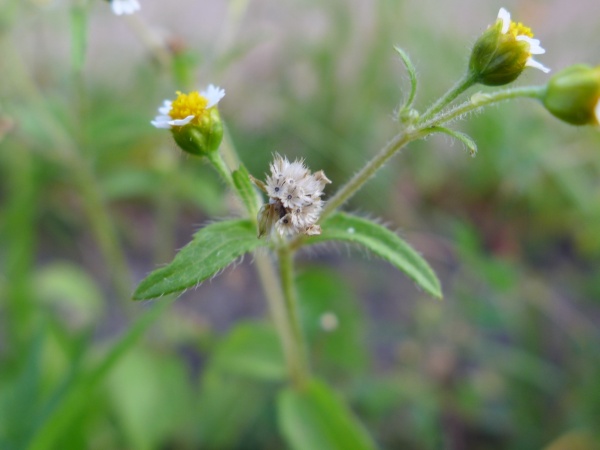
This flower is blooming everywhere right now but we never notice it. Its beauty is tiny and the plant is a weed so we pass it by.
Galinsoga or Quickweed is an annual in the Aster family with small daisy-like flowers with five notched petals. The leaves are opposite and toothed in a jumbled mass below the long, branching flower stems that give the plant a messy “leggy” appearance, 6-18 inches high.
Look closely and you’ll see the leaves and stems are both hairy. But no one looks closely unless they want to eat it (yes it’s edible).
Here’s what we typically see when walk past Galinsoga on the street.

Once you start looking, Quickweed is everywhere: growing in the sidewalk cracks, sprouting in gardens, covering an abandoned lot where its density makes it pretty. Local gardeners call it “Pittsburgh Pest.”
It earned the name Quickweed or Raceweed because it produces seed rapidly (7,500 seeds per plant per year) and has many generations in the same season.
When it’s gone to seed it looks like this.

The genus is Galinsoga but what is the species?
Good question! My Newcomb’s Wildflower Guide lists only Galinsoga ciliata = Galinsoga quadriradiata. Richard Nugent and Flora Pittsburghensis both identify it as Galinsoga parviflora. Quadriradiata is from Mexico, parviflora is from South America. In any case, it didn’t jump an ocean to find us.
But it jumped an ocean to Europe. Galinsoga parviflora was taken from Peru to Kew Gardens in 1796 where it escaped to the wild and quickly became a weed.
Aha! Quickweed.
(photos by Kate St.John)